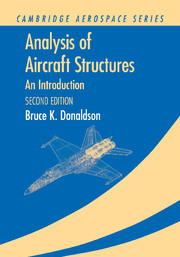Book contents
- Frontmatter
- Contents
- Introduction to the Second Edition
- Introduction to the First Edition
- List of Repeated Engineering Symbols
- Acknowledgments
- Part I The Fundamentals of Structural Analysis
- Part II **Introduction to the Theory of Elasticity**
- Part III Engineering Theory for Straight, Long Beams
- Part IV Work and Energy Principles
- Part V Energy-Based Numerical Solutions
- Part VI Thin Plate Theory and Structural Stability
- Appendix A Additional Topics
- Appendix B Selected Answers to Exercises
- References
- Index
Part II - **Introduction to the Theory of Elasticity**
Published online by Cambridge University Press: 05 June 2012
- Frontmatter
- Contents
- Introduction to the Second Edition
- Introduction to the First Edition
- List of Repeated Engineering Symbols
- Acknowledgments
- Part I The Fundamentals of Structural Analysis
- Part II **Introduction to the Theory of Elasticity**
- Part III Engineering Theory for Straight, Long Beams
- Part IV Work and Energy Principles
- Part V Energy-Based Numerical Solutions
- Part VI Thin Plate Theory and Structural Stability
- Appendix A Additional Topics
- Appendix B Selected Answers to Exercises
- References
- Index
Summary
Introduction
There are only two chapters in this optional part of the textbook. Chapters 7 and 8 simply provide examples in different circumstances of putting together the four basic sets of equations for a stress formulation (the equilibrium equations, compatibility equations, the strain–stress material equations, and the stress boundary conditions) or a displacement formulation (the equilibrium equations, the stress–strain constitutive equations, the strain–displacement equations, and the displacement or stress boundary conditions).
This section is labeled optional for two reasons. The first and foremost reason is that the type of problems that are solved in Part II, particularly those of Chapter 8, in which the geometry of the structural element involves straight line (planar) boundaries, are more easily, indeed routinely, solved by the finite element method, which is presently the dominant approximate method of structural analysis. Only the very simple circular geometries of Chapter 7 offer a rare exception to the rule, which is to use the finite element method and forget the exact solutions offered in these two chapters and elsewhere. The second reason that this part of the textbook is optional is because it is expected that most, if not all, undergraduate curriculums cannot provide the time to consider this material, which, as mentioned, is far from the center of present engineering practice. Thus, the question arises as to why this material should be included at all.
- Type
- Chapter
- Information
- Analysis of Aircraft StructuresAn Introduction, pp. 165 - 166Publisher: Cambridge University PressPrint publication year: 2008



